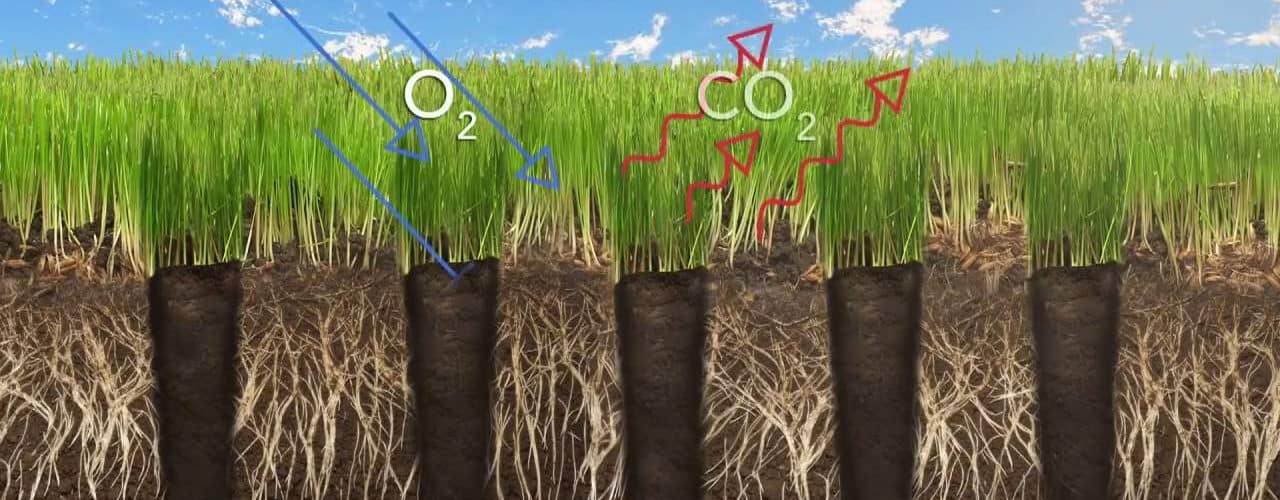You may have heard aerating your lawn will make it healthier, fuller or more green. You may have heard you need to aerate before reseeding or fertilizing, or maybe some nosy neighbor stopped by and said your yard needs dethatching. That’s all fine and good, except for one thing. You may not know how to do it! The following steps will walk you through the process, start to finish, no matter your skill level out in the yard.
Contents
* How to Aerate Your Lawn
Aerate means to supply with air. When you aerate your lawn, you supply the roots with more oxygen, food and water. You do that by removing plugs of soil at regular intervals throughout your yard with a tool called an aerator.
Aerators are much like lawnmowers in that there’s a wide variety in tools with the same common name. There is the shovel variety, the small machine you tow behind a lawn mower, and the larger, riding-style aerator. There are even aerating shoe covers you can use – theoretically – by stomping across your yard.
* Choosing an Aerator
The size of your yard is the biggest factor in determining the type of aerator you choose. A small yard – one you would feel comfortable mowing with a small reel mower – would be an appropriate choice for the shovel variety. Anything you would want a power mower to handle, you want a power aerator to handle.
Aerators are heavier and bulkier than most consumer mowers. They may remind you more of a hefty snowblower. They’re also more expensive, and may not be a sensible purchase. Instead, consider a rental or even having the service professionally done.
* Buy, Rent or Hire Out
Whether you rent or buy depends on how often you think you’ll really use one. Because aerating is usually done once a year or less, the expense doesn’t make as much sense as buying an expensive mower or snowblower.
Most home improvement centers rent power aerators, but whether you have the equipment – or manpower – to get one home may be a different story. These are heavy machines, they are bulky and somewhat difficult to use.
Hiring out the job to a professional lawncare company may be your best option. Sometimes you can contract for aeration as part of a spring or fall clean up package to save on costs. Prices range greatly depending on area and company.
* Aeration Preparation
Taking plugs out of the soil means digging into the ground. Give a call to your utility companies and ask them to make your yard. Also note any sprinkler systems, cisterns or other features which might cause you trouble.
Because you’ll be cutting through grass, roots and compacted soil, it helps to water really well a few days before you have the job done. Just make sure there is time for things to get somewhat dry. You don’t want those heavy machines slogging through mud.
* The Day Of
You have your aerator in hand, or have the company contracted for the job on your doorstep. The fun starts now. Making sure every area of your yard is covered, go over your lawn in the pattern you usually take when mowing.
If your lawn has a lot of thatch – more than 1/2 inch of grass and roots layered on top of the soil – or if the soil is very compacted, go over the yard twice. It’s best to do one run in the direction you mow, and one in the opposite direction.
As the job progresses, you may notice unsightly plugs littering your lawn. While you can rake them up and put them in with yard clippings and other compost, you can also leave them be. As it rains, or as you water, the plugs will quickly break down and provide nutrition for your yard.
* The Day After
Now that your soil is open and airy, you have the perfect chance to fertilize or reseed. This is another good reason its best to wait until spring or fall to aerate your yard. In addition, your grass will be in need of moisture, and could use another good watering.
Anyone who can mow and snowblow can figure out how to aerate their own lawn. Other factors – cost, time and difficulty – determine the kind of tools you’ll need, whether you rent or own and whether you’ll do the work or hire someone else to do it for you. It’s worth the effort to give your lawn a chance to grow to its full potential.



